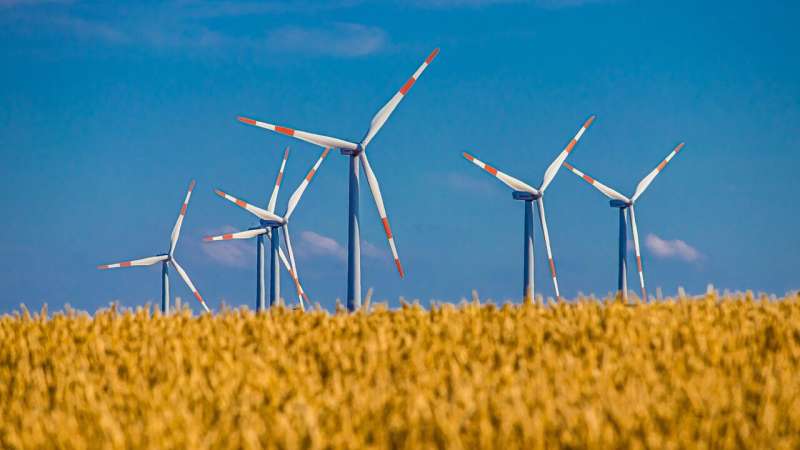
Wind is doing a better job of displacing carbon from the electricity grid than it gets credit for, according to a recent mechanical engineering master’s graduate whose economics-steeped thesis makes the case that wind power generators could become victims of their own success.
Faith Nobert, who initially wanted to study biomedical engineering, became fascinated by sustainability after taking a thermodynamics class with professor Tim Weis. She realized the importance of reducing emissions for a healthier future and became a research assistant in Weis’s group.
“As engineers, we’re often taught to aim for the highest efficiency or output,” Weis explains, “but I like to remind my students that the market doesn’t always reward those things. And you can’t build things unless you can make them work financially, and so they need to understand energy markets and energy policy too.”
Nobert’s research stood out because it blended engineering and economics, guided by both Weis and Andrew Leach, an energy and environmental economist. This interdisciplinary approach is attracting more students, as Weis notes: “It’s an area we don’t talk as much about in engineering, but it is what more and more students are drawn to.” The paper is published in the journal Wind.
The St. Albert native focused on Alberta’s changing electricity market, especially after an industrial carbon price helped phase out coal power by June 2024. She wanted to quantify how much carbon emissions wind energy was actually displacing.
Alberta’s electricity market is an auction. Generators offer power at various prices, and the lowest-priced options are used first. Wind energy has an advantage, bidding at $0 per megawatt-hour gets it priority on the grid. However, like all generators, wind plants are paid the price of the most expensive electricity source needed to meet demand at any given time.
As more wind and solar power come online, the more zero prices are offered, and electricity prices tend to drop. On very windy hours, producers might get paid very little, or even nothing. This dilemma sparked Nobert’s research: “If we want more wind on the system for emission reductions, and as we’re pushing for net zero in the future in Alberta, then how do we continue to pay these generators?”
Currently, carbon pricing helps. Wind power produces no emissions, so it earns carbon credits, which are essentially payments for preventing carbon pollution. Nobert’s study revealed that wind energy credits could be up to 57% more valuable than current calculations suggest.
However, she found a paradox: this very incentive system could eventually undermine itself. As more wind energy enters the grid and emissions decrease, there’s less carbon left to displace. Even with Alberta’s carbon price projected to nearly triple in the next five years, this financial support mechanism could ironically weaken.

“The intrinsic value of the offset kind of cannibalizes itself as more wind energy enters the market,” says Nobert. “Offsets are brought in to help support wind energy, but if their value declines, then it poses some challenges for the continued support of wind energy.”
Nobert’s research isn’t just about problems; it offers solutions. She suggests using battery storage to save wind power for peak demand, building more power lines to sell excess wind power to other regions and upgrading existing turbines for greater flexibility in the market.
“This is a critical question as Alberta aims for a net-zero future with even more renewable energy on the grid,” she emphasizes.
Nobert has also been accepted into medical school, showcasing her truly interdisciplinary approach. As Weis puts it, “Engineering to business to medicine. She’ll be one of our most well-rounded students.”
More information:
Faith Nobert et al, A Wind Offset Paradox: Alberta’s Wind Fleet Displacing Greenhouse Gas Emissions and Depressing Future Offset Values, Wind (2025). DOI: 10.3390/wind5010002
Citation:
Power paradox: Why wind energy could face an economic squeeze (2025, July 7)
retrieved 7 July 2025
from
This document is subject to copyright. Apart from any fair dealing for the purpose of private study or research, no
part may be reproduced without the written permission. The content is provided for information purposes only.













Leave a comment